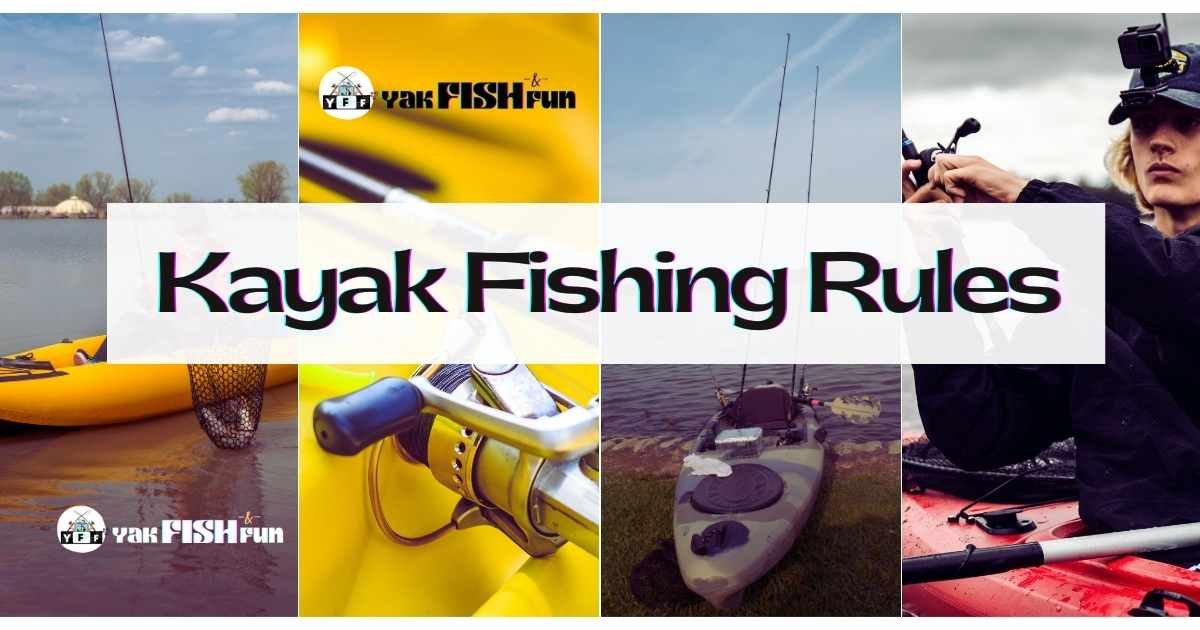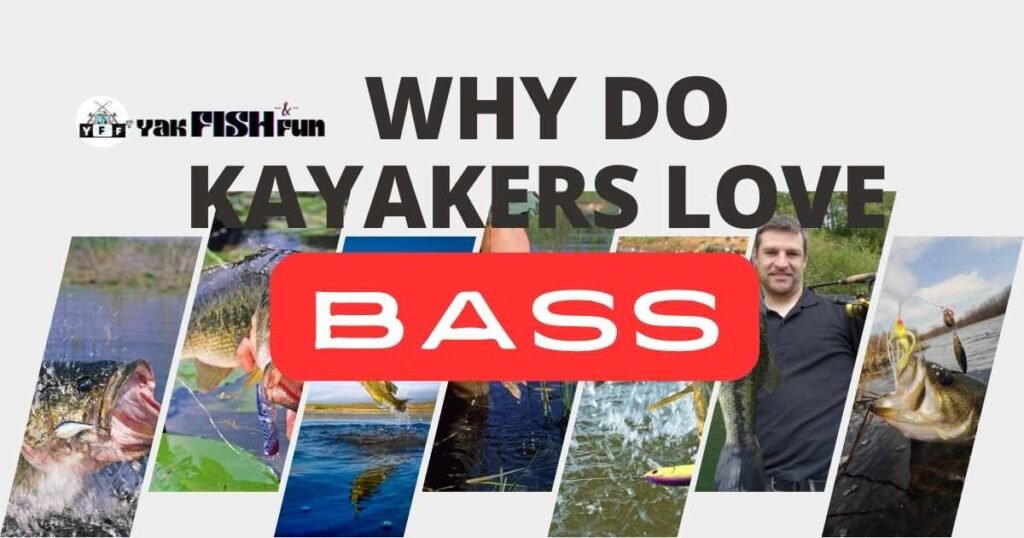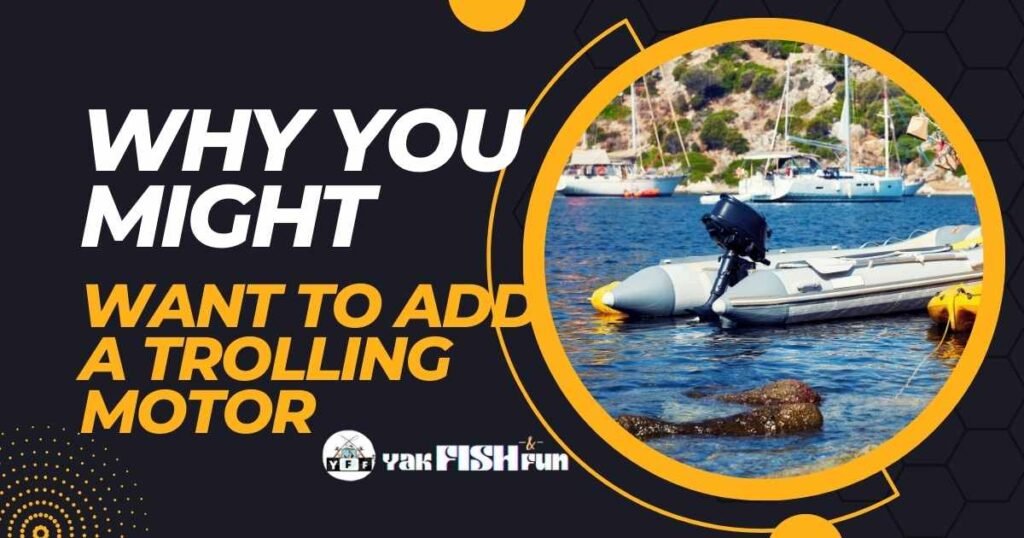Kayak fishing is a popular and exciting activity that combines the thrill of fishing with the adventure of kayaking.
But hey, before you cast that line and reel in the big one, it’s crucial to understand why following kayak fishing rules is as important as knowing which bait to use. We’re talking about ensuring your safety out on the water and doing your part in conserving our precious ecosystems.
These rules are designed to ensure your safety, maximize your fishing success, and protect the environment. This article will explore 14 kayak fishing rules that every angler should follow.
From choosing the right kayak and equipment to understanding fishing regulations and practicing proper etiquette, these rules will help you maximize your kayak fishing experience.
So, let’s dive in and discover the essential rules that will make you a better kayak angler!
Table of Contents

Kayak Fishing Rules 101: Why These Matters
Knowing and following the rules is important when you go kayak fishing. These rules help keep you safe, ensure the fish population stays healthy, protect the environment, and keep the water in balance.
Related: Kayak Fishing Basic: Beginner’s Guide to Kayak Fishing
Kayak fishing has become really popular lately because it lets you have a special experience on the water while having fun catching fish. But if you don’t follow the rules, it cannot be good for the environment and unsafe for you.
When you follow the rules for kayak fishing, you’re helping to protect the fish. These rules might say that you can only catch fish of a certain size. This is to make sure that the younger fish have a chance to grow up and have babies before we catch them. We’re also encouraged to catch fish and let them go back into the water to reduce the impact on the fish population. When we do these things, we can still have fun fishing, and we make sure there will be fish for us to catch in the future.
Conserving ecosystems is another crucial aspect of kayak fishing rules. Many water bodies are delicate environments that require protection from excessive human interference. When you’re kayaking and fishing, following some rules is important. These rules are set by the local authorities. They might say that you can’t fish in certain places, or they could have some specific rules to follow.
By following these rules, you help protect important homes for different water animals. This way, these underwater places can stay healthy for future generations of both fish and people who love to fish.
Keeping the water environment balanced is important for the fish and the overall health of everything in the water. Some rules might tell you not to use certain bait or lures because they can harm other fish or mess up how things work underwater. When we follow these rules, we make sure everything underwater stays in harmony.
Following these rules also keeps you safe when you’re out on the water. They might say you must wear a life jacket, have safety gear like whistles, and check the weather before going out. By doing these things, you lower the chances of accidents and ensure you return safely after your fun day of kayak fishing.
The 14 Rules Kayak Anglers Should Follow
Kayak fishing is a thrilling and rewarding activity that allows anglers to get closer to nature and enjoy the serenity of the water. But to have a good time and keep things safe and eco-friendly, you need to follow some rules. These rules help you, the environment, and other people who love fishing.
Safety Rules For Kayak Fishing
- Obtain the necessary fishing licenses and permits specific to the area. Before heading out on your kayak fishing adventure, make sure you have all the required licenses and permits. This ensures that you are legally allowed to fish in your chosen location.
- Wear a personal floatation device (PFD) or life jacket at all times while on the water. A PFD is crucial for your safety as it keeps you afloat in case of an accident or capsize.
- Carry safety equipment such as a whistle, signal mirror, or flashlight for emergencies. These items can be lifesavers in critical situations by attracting attention or signaling for help.
- Be aware of weather forecasts and avoid fishing in hazardous conditions. Always check weather conditions before setting out on your kayak fishing trip. Strong winds, storms, or rough waters can pose significant risks.
- Understand and follow boating navigation rules to ensure safe operations. Familiarize yourself with boating regulations regarding right-of-way, navigation aids, speed limits, etc., to prevent accidents on the water.
Conservation Practices
- Practice catch-and-release techniques to minimize harm to fish populations. Catch-and-release allows future generations of anglers to enjoy fishing by preserving fish stocks.
- Use appropriate fishing techniques to prevent damage to aquatic habitats. Avoid methods that may harm sensitive ecosystems, such as dragging lures along the bottom or disturbing underwater vegetation.
- Dispose of trash and fishing waste properly to keep the environment clean. Pack out what you pack in and dispose of any waste responsibly. This helps maintain the beauty of the natural surroundings.
- Take steps to prevent the introduction of invasive species by cleaning and drying equipment. To stop new types of animals and plants from invading and hurting the local ones, make sure to clean and dry your stuff. Check your kayak, gear, and clothes to make sure there are no hidden stowaways before you go to different waters.
Etiquette and Sportsmanship
- Respect restricted areas or zones where fishing is prohibited. These areas exist for a reason, whether it’s protecting sensitive ecosystems or ensuring public safety. Adhere to all posted signs and regulations.
- Respect the rights of other anglers, boaters, and water users while on the water. Give fellow anglers enough space and avoid interfering with their fishing experience.
- Gain permission and respect private property rights when fishing near shorelines. If you want to fish near someone’s private property, ask them for permission first and be respectful of their rights.
- Report any illegal activities or suspicious behavior to local authorities. When you report these kinds of incidents, you help ensure everyone who fishes stays safe and discourages illegal activities.
- Follow any specific rules regarding the use of live bait or artificial lures. Make sure to check if there are any special rules about using real worms or fake fish when you go kayak fishing!
Off-Limits Areas and Angler Restrictions
It’s important to be aware of the off-limits areas and applicable angler restrictions. Understanding these rules not only ensures your safety but also helps in preserving the environment and wildlife. Let’s dive into some key points regarding this topic.
Specific areas where kayak fishing is prohibited
While kayaking offers a unique and exciting way to explore the waters, there are certain locations where fishing from a kayak is strictly prohibited. These areas usually include:
- Marine protected areas (MPAs): These special areas are set up to protect the oceans and all the different plants and animals that live there. Sometimes, you might not be allowed to go fishing, even in a kayak, in these places to keep them safe.
- Wildlife sanctuaries: These protected zones are home to various species of animals and plants. Fishing is often not allowed in these sanctuaries to maintain their natural habitat.
- Private property: Please be respectful of people who own the land by not fishing in their private waters unless they say it’s okay.
Related: How To Identify A Good Spot For Kayak Fishing?
Understand the reasons behind angler restrictions in certain locations
Angler restrictions exist for several reasons, primarily focused on conservation efforts and public safety. By limiting or prohibiting fishing activities in specific areas, authorities can:
- Protect vulnerable species: Some regions serve as breeding grounds or habitats for endangered fish species. Restricting angling activities helps safeguard their populations from further decline.
- Prevent overfishing: Having rules in place makes sure we don’t catch too many fish, which helps keep the fish population healthy and not in danger.
- Preserve sensitive ecosystems: Coral reefs, which are sensitive underwater areas, need extra care because they can easily be harmed by fishing equipment or when people disrupt them. So, we need to protect them.
Learn about marine protected areas (MPAs) that have additional regulations
Marine protected areas play a crucial role in conserving our oceans’ health and biodiversity. These zones often have additional regulations beyond general angling restrictions. When planning your kayak fishing adventure:
- Research local MPAs: Familiarize yourself with the specific rules and regulations of MPAs in your area. Check online resources or contact the local wildlife department for detailed information.
- Respect no-take zones: Some MPAs have designated areas where all forms of fishing are prohibited. These zones serve as sanctuaries for marine life to thrive undisturbed.
Stay updated on any temporary closures due to environmental factors or events
In addition to permanent restrictions, temporary closures may be imposed on certain waters due to environmental factors or events. Stay informed about any such closures by:
- Checking official websites: If you want to know if certain places are closed for a little while, like parks or nature areas, go to the website of your local wildlife department or the government folks in charge. They’ll have the latest information there.
- Following social media accounts: Lots of groups that make fishing rules share current updates on their social media pages.
Following these closures is important because they’re meant to keep the environment safe and you, too.
When you know where not to go and what rules to follow, you can have a fun and responsible kayak fishing time. Make sure to do what the local authorities say to help protect our waters and wildlife.
Related: Best Time for Deep Sea Kayak Fishing in the Gulf
Now, let’s talk about staying safe while you’re out on the water, which is also a big part of kayak fishing.
Bottom Line
So there you have it, fellow anglers! Understanding and following the kayak fishing rules is essential for a safe and enjoyable experience on the water. These rules keep you safe and ensure you have a good time, but they also help protect the environment.
When you follow these rules, you’re being a responsible angler and helping keep our waters looking beautiful. Always check the rules for the specific place you’re going because they might be different in different areas. And most importantly, always make safety your number one concern.
Now that you know why these rules are important, get your gear, get in your kayak, and confidently enjoy your time on the water. Remember, following these guidelines not only makes your experience better but also helps take care of our important water ecosystems.


